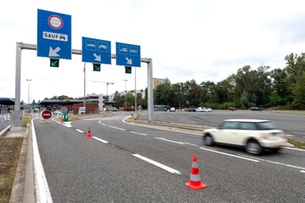At the end of 2018, 314,000 cross-border workers were working in Switzerland. The number of cross-border workers in Switzerland – except those from France – has dropped for the second consecutive quarter. This marks the second year-on-year decline by quarter in 20 years. According to numbers released by the Federal Statistical Officeexternal link on Thursday, the fourth quarter of 2018 saw 2,000 fewer people commuting to Switzerland to work compared to the same period the year before. There were fewer commuters from Italy (-4.1%) and Germany (-2.4%), but more from France (+1.3%). In terms of sheer numbers just over half came from France (55%), about a quarter from Italy (22.4%) and a fifth from Germany (19.2%). At
Topics:
Swissinfo considers the following as important: 3) Swiss Markets and News, Featured, Latest News, newsletter
This could be interesting, too:
Nachrichten Ticker - www.finanzen.ch writes Die Performance der Kryptowährungen in KW 9: Das hat sich bei Bitcoin, Ether & Co. getan
Nachrichten Ticker - www.finanzen.ch writes Wer verbirgt sich hinter der Ethereum-Technologie?
Martin Hartmann writes Eine Analyse nach den Lehren von Milton Friedman
Marc Chandler writes March 2025 Monthly

At the end of 2018, 314,000 cross-border workers were working in Switzerland.
The number of cross-border workers in Switzerland – except those from France – has dropped for the second consecutive quarter. This marks the second year-on-year decline by quarter in 20 years.
According to numbers released by the Federal Statistical Officeexternal link on Thursday, the fourth quarter of 2018 saw 2,000 fewer people commuting to Switzerland to work compared to the same period the year before. There were fewer commuters from Italy (-4.1%) and Germany (-2.4%), but more from France (+1.3%).
In terms of sheer numbers just over half came from France (55%), about a quarter from Italy (22.4%) and a fifth from Germany (19.2%). At the end of 2018, 314,000 cross-border workers were working in Switzerland.
Major centres
Four out of five cross-border workers were working in three Swiss economic hubs: over a third in the Lake Geneva region (37.3%), almost a quarter in Northwestern Switzerland (22.1%) and a fifth in Ticino (19.8%). The absolute number was highest in the Lake Geneva Region (117,000).
However, the situation is different in terms of their share in the labour force. While the Lake Geneva region (12.1%) and Northwestern Switzerland (10.3%) had fairly similar shares, the proportion of cross-border commuters in Ticino represented more than a quarter of the employed workforce (27.3%).
Tags: Featured,Latest news,newsletter
